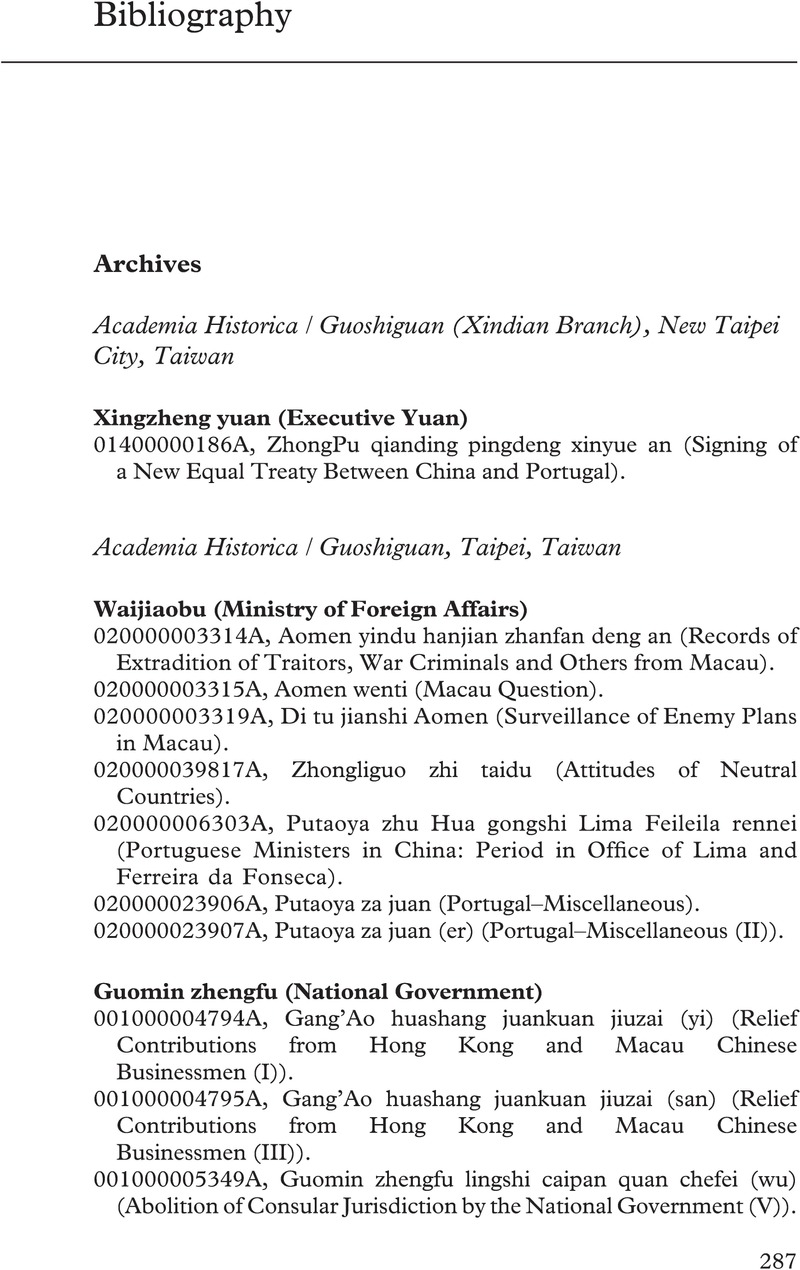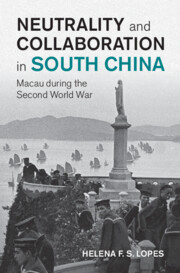Book contents
- Neutrality and Collaboration in South China
- Studies in the Social and Cultural History of Modern Warfare
- Neutrality and Collaboration in South China
- Copyright page
- Dedication
- Contents
- Figures
- Tables
- Acknowledgements
- Note on Chinese Names
- Abbreviations
- Introduction: An ‘East Asian Casablanca’
- 1 Caught in the Middle
- 2 Old Allies and New Friends
- 3 Crisis and Opportunity
- 4 The Last ‘Lone Island’
- 5 Colonial Transplantation
- 6 Seeking Justice and Recognition
- Epilogue
- Book part
- Glossary of Chinese Names
- Bibliography
- Index
- References
Bibliography
Published online by Cambridge University Press: 01 June 2023
- Neutrality and Collaboration in South China
- Studies in the Social and Cultural History of Modern Warfare
- Neutrality and Collaboration in South China
- Copyright page
- Dedication
- Contents
- Figures
- Tables
- Acknowledgements
- Note on Chinese Names
- Abbreviations
- Introduction: An ‘East Asian Casablanca’
- 1 Caught in the Middle
- 2 Old Allies and New Friends
- 3 Crisis and Opportunity
- 4 The Last ‘Lone Island’
- 5 Colonial Transplantation
- 6 Seeking Justice and Recognition
- Epilogue
- Book part
- Glossary of Chinese Names
- Bibliography
- Index
- References
Summary

- Type
- Chapter
- Information
- Neutrality and Collaboration in South ChinaMacau during the Second World War, pp. 287 - 316Publisher: Cambridge University PressPrint publication year: 2023



